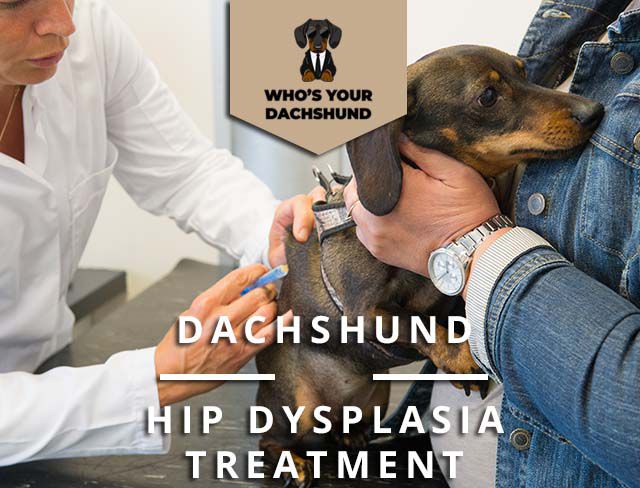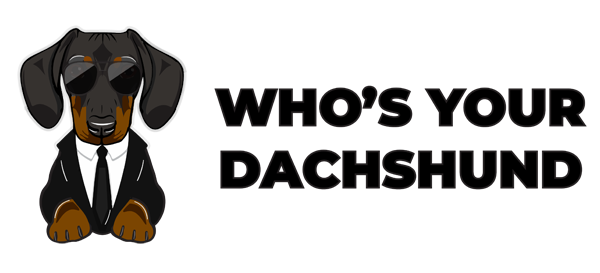
What Is Canine Hip Dysplasia?
Canine Hip Dysplasia is a congenital or developmental abnormality of the hip joint. It is also known as hip dysphasia or canine hip dysfunctions. The two most common types are osteoarthritis and developmental dysplasia of the hip (DDH).
Osteoarthritis affects the articular cartilage or covers of the joint. These layers will wear away over time, causing pain and instability, and decreased motion. DDH, a congenital condition, causes problems in the hip joint. This disorder may occur in one or both hips and can be detected by x-rays at a very early age. The dog’s leg may appear deformed, as it will not fit into the proper position at rest.
Hip dysplasia affects any dog but is most common in Border Collies, German Shepherds, and Labrador Retrievers. It is a genetic disorder that is passed onto offspring. Hip dysplasia has been shown to affect how a dog moves and walks. The hips are three bones: the femur, the stifle (knee joint), and the tibia (shin bone). The hip joint is designed to allow for fast and easy movement while walking on four legs. The anatomy of the hip prevents dogs from moving in a typical fashion.
Hip dysplasia can be diagnosed at any age – the earlier it is detected, the less severe the condition will be. It is crucial to determine whether a dog has hip dysplasia or not. You can do this by having your veterinarian perform a physical examination on your dog. Your veterinarian will check your dog’s legs, hips, and back by taking a close look at the dog’s legs to ensure that his legs are positioned correctly and moving in a straight line.
What Causes Hip Dysplasia in Dogs?
Hip dysplasia (also known as hip disease or crooked hip) is a debilitating condition affecting more than 60% of all dogs. The condition occurs when the hip joint develops abnormally. Depending on the severity, the signs and symptoms can vary from non-existent to severe. This disease is found in all dog breeds but seems to affect some strains (varieties) and pure breeds far more than others.
In dogs, hip dysplasia causes intense pain in the hip joints, leading to lameness. The hips may even appear twisted due to bone misalignment, a deformity. The disease may become so severe that walking becomes difficult or impossible. As the disease worsens, arthritis and other degenerative joint diseases set in and interfere with your dog’s quality of life. Hip dysplasia is preventable, but it is impossible to stop developing the disease.
Dogs are affected by hip dysplasia in varying degrees of severity. If your dog can still get around, you might not have to worry about undergoing surgery. However, if pain and dysfunction increase, surgery may be necessary. Hip dysplasia surgery can have a very positive outcome for your dog, but there are also risks involved in any operation type. A board-certified veterinary orthopedic surgeon should perform your dog’s hip dysplasia surgery.
What Dachshund Hip Dysplasia Treatment Is
Dachshunds are well known for their long, low-slung bodies and short legs that make them prone to hip dysplasia. It is a developmental problem where the thigh bone ball may not fit snugly within the hip joint. You can start treating dachshunds from an early age with drugs to prevent hip dysplasia, but it may get worse eventually and demand surgery. The Dachshund puppy vaccination schedule is an integral part of your pet’s care.
What Causes Dachshund Hip Dysplasia?
Hip dysplasia arises when one or both hips are dislocated or malformed. This disease’s severity may range from a mild condition that may never cause problems to a pressing genetic problem so grave that the dog cannot walk without pain or discomfort.
What are the Symptoms of Dachshund Hip Dysplasia?
Any Dachshund with hip dysplasia will be lame or even seem to be lame. It will hop along on three legs or may not be able to bear weight on one or more legs. If a dachshund lops, it will limp or walk on three legs. In the worst cases, the dog will be unable to bear weight and must be carried because it cannot walk.
How is Hip Dysplasia Diagnosed?
The vet first examines your dog to see if it can stand and hold its tail straight up. If it can’t, you’ll need to have a check performed by an orthopedic surgeon, who may manually palpate the thigh bones to see if they’re out of place. X-rays will be taken and compared with that of a healthy dog.
What Treatment Options are Available for Hip Dysplasia in Dachshunds?
Dogs diagnosed with mild hip dysplasia may never need treatment. A course of anti-inflammatory drugs may be all that’s required to keep your Dachshund on the go. However, some dogs may need surgery to remove the thigh bone’s head and allow it to fit correctly in the hip joint. More severe cases may require a prosthesis in the joint to replace the thigh bone ball. These dogs will need anti-inflammatory drugs to control pain and swelling, and regular exercise will be necessary.
What about other Treatments for Hip Dysplasia in Dachshunds?
Dachshunds with hip dysplasia may require anti-inflammatory medicines like carprofen and meloxicam rather than treatment for hip dysplasia’s primary problem. Your vet may also recommend a nutritional supplement containing calcium, glucosamine, and chondroitin to reduce inflammation and promote joint health.
What happens to Dachshunds with Hip Dysplasia?
If your Dachshund survives the second stage of life, it should live a comfortable, pain-free life. However, exercise is essential for both its mental health and physical health. Physical therapy may help your dog regain its temperament lively personality.
What You Should Know Before Committing to Dachshund Hip Dysplasia Treatment
The following information is designed to help you, as a pet owner, to understand the Dachshund Hip Dysplasia condition and the various treatments available. This information should also help you make a more informed decision regarding your pet’s treatment.
Dachshunds suffer from a genetic disorder known as Dachshund Hip Dysplasia. It is not a crippling disease. The vast majority of Dachshunds have good mobility into old age. However, some dogs are prone to arthritis and lameness due to their hips and thigh bones’ poor fit.
Dachshunds can have a genetic predisposition to Hip Dysplasia, or they can develop it due to rapid growth. Breeding stock should test for hip dysplasia, and both parents should have a free rating from the Orthopedic Foundation for Animals or PennHip.
Dachshunds’ recommended breeding age is between 2 and 5 years old when the dogs are fully grown. They are mature enough for mating at around 15 months of age.
If the breeding stock is young and not fully mature, rapid growth may cause changes that may increase Hip Dysplasia’s chances later on.
When a dog is x-rayed as part of Hip Dysplasia testing, the hip joints show up as either “fair,” “good,” or “excellent.” A dog with two good hips should not have any problems with Dachshund Hip Dysplasia. However, a dog with one good hip and one “fair” hip is at higher risk of developing Dachshund Hip Dysplasia.
It is not recommended to breed from a dog with one “fair” hip unless it has excellent confirmation or quality in its other traits.
Dachshunds have very short legs and round bodies, which can cause physical problems for the dog resulting in lameness and pain. There are three kinds of dysplasia:
Coxofemoral
Femoral
Acetabular
It is generally true that older dogs are more likely to have hip dysplasia than younger ones, but this is not always the case. Post-adolescent dysplasias may also occur in older dogs, and it is not uncommon for an old dog to show signs of dysplasia. Any dog can develop hip dysplasia regardless of its size. Small dog breeds are at the most significant risk of hip dysplasia.
How to Know If Your Dachshund is a Candidate for Dachshund Hip Dysplasia Treatment
There are several ways to determine whether your Dachshund is a candidate for hip dysplasia treatment. These are:
Step 1 – History of Limping
It is essential to know where your Dachshund has been limping as with humans. If the limping occurs in a place that a veterinarian or other medical professional does not quickly treat, this may indicate hip dysplasia. As mentioned above, there are various ways to determine if a Dachshund has developed hip dysplasia, including x-rays and tests for the hip joint itself.
Step 2 – X-Rays
The x-rays will provide you with a clear look at the x-ray of your dog¡¯s hips. They can be valuable for determining how well the hips are functioning and how far they have degenerated. It can also help determine whether surgery is an option for your Dachsund in the future.
Step 3 – Comparison with Other Dachshunds
An excellent way to determine whether your Dachshund is experiencing hip dysplasia symptoms is to compare it to other members of the breed. If your Dachshund is miniature and experiencing differences among leg lengths, or has been noticeably slower than other members of the breed, then this may be a cause for concern. Comparing your Dachshund with other Dachshunds is the best way to determine this.
Step 4 – Video Analysis
One of the most powerful ways to determine whether your Dachshund has hip dysplasia is video analysis. This method compares the hips’ movement with two other dogs experiencing hip dysplasia and one that has not been diagnosed with it. The results can be precious in determining whether this can cause your dog condition.
Step 5 – Joints
You can also determine whether a dog has hip dysplasia by looking at the joints. The two joints in the hip area are known as the stifle joint and the tibiotarsal joint. These will be exposed by gently pulling back any skin folds and looking at them. If your dog is experiencing pain or is experiencing similar symptoms to hip dysplasia, then changes in this region will probably be evident.
The Cost of Dachshund Hip Dysplasia Treatment
The cost of dachshund hip dysplasia treatment can be expensive, but it is not always necessary. The operation cost will depend on the extent of your dog’s disease, the length of the surgery, and the number of parts required for surgery. The actual surgery may cost between $500 and $2,000. These prices may include pre-operative bloodwork and anesthesia and postoperative pain management. The actual costs of hip dysplasia treatment vary depending on factors such as the surgeon’s experience, whether or not your pet needs a revision surgery, and how long the surgery will take to perform.
Pre-operative bloodwork and anesthesia:
The cost of pre-operative blood work and anesthesia will depend on the number of x-rays needed and how many times they need to be done. It will also depend on whether your pet has any other conditions that may require treatment. Pre-operative blood work and anesthesia may cost from $300 to $700.
Postoperative pain management:
The postoperative pain management for hip dysplasia treatment costs about $40 to $60 a day. If your pet requires a course of pain management, then the total cost may be around $100 per day. The costs of pain management will vary depending on which veterinarian is doing the surgery and how long it will take to complete it. Depending on whether your pet needs a revision surgery, the total cost of hip dysplasia treatment will include both of these procedures.
Surgery:
The total cost of hip dysplasia treatment ranges from $500 to $2,000. These prices may include pre-operative bloodwork and anesthesia and postoperative pain management. The actual cost of hip dysplasia treatment varies depending on factors such as the surgeon’s experience, whether or not your pet needs a revision surgery, and how long the surgery will take to perform.
Surgical treatment may consist of one or more procedures depending on how many parts of your pet’s body are affected by the condition. The procedure may also vary based on whether your pet is a male or female.
The cost of the surgical procedure will depend on whether or not your pet has any particular conditions that may require treatment, as well as the surgeon’s experience. The actual costs of hip dysplasia treatment vary depending on factors such as the surgeon’s experience, whether or not your pet needs a revision surgery, and how long the surgery will take to perform. Depending on whether your pet needs a revision surgery, the total cost of hip dysplasia treatment will include both of these procedures.
The cost of dachshund hip dysplasia treatment varies depending on many different circumstances. The type of surgeon who will perform your pet’s surgery is among the most critical factors determining the cost. It also depends on which procedure(s) your pet will need and how long the surgery will take to perform. The cost ranges from $500 to $2,000.
Dachshund Hip Dysplasia vs. Canine Hip Dysplasia
There are many similarities between dachshund hip dysplasia and canine hip dysplasia in general. The main differences between the two conditions are that dachshunds are more likely to develop HD than other dog breeds. It also includes heritability and environmental factors.
Dachshunds are still more likely to develop HD than other dog breeds. The average age that HD is diagnosed in dachshunds is two years and six months, but it can be diagnosed as early as three years. Although genes cause hip dysplasia itself, the genes that cause HD remain unknown. Environmental factors are behind the difference in the average age of diagnosis between dachshunds and other breeds.
1 in 157 Dachshunds will be diagnosed with HD, a relatively high ratio. The average age of diagnosis for hip dysplasia is two years and six months in dachshunds. However, some dogs are diagnosed with this disease as early as 3.
Environmental factors are behind the difference in the average age of diagnosis between dachshunds and other breeds. If the dog lives in a colder area, its onset is delayed. There is no exact reason for the difference in age of diagnosis. However, it may be due to dachshunds’ increased range of motion.
How to Start a Care Package for a Dachshund with Hip Dysplasia
A Dachshund with Hip Dysplasia will need a lot of help to stay mobile and healthy. To help keep your Doxie on the go, start a care package. Here’s how:
- Start with a cardboard box that isn’t too large but is sturdy. If you can’t find the correct size box, it can always be trimmed later. A fitted plastic garbage bag (such as is used to cover up the contents of your garbage can) makes a suitable container as well. Most people will start their packages at home, but you might want to take some wrapped items with you when you visit your vet for other things.
- Please put them in a plastic grocery sack or bag first to keep them from mixing with the contents of your box.
- Next, put a bag of small treats (such as a small portion of jerky that doesn’t require refrigeration) or two in with your pet’s favorite toys and chewies.
- Include at least two cans of filtered indoor kibble in your box. Add some canned dog food, too. If your Doxie is on any prescription diet, include that as well (just a can or two). You might also include a can of canned food that is on the special diet.
- You should make sure the vet knows where you bought the item, so you should include your address and telephone number. That will be the same way your vet gets newsletters.
- Include an assortment of bandages and gauze pads. Put in some soft gauze rolls and a roll of Vetrap (as long as it doesn’t have any petroleum-based adhesive). Those are also a must if you can find some sterile surgical sponges.
- Put in a good pair of grooming scissors.
- Put in some anti-itch cream, just in case it’s needed.
- Put in some moist towelettes (such as the ones used for oil-change cars).
- If you have other items that would be useful, put them in along with the ones mentioned above. Then zip up the box or bag and seal it with a duct tape strip.
It’s up to you how much stuff to put in your box. A Dachshund with Hip Dysplasia is going to need a lot of help. But remember that they are animals, and they will sometimes reject something you put in. Most Doxies can live a long time with good preventative care and minimal problems, so you will likely get many uses out of this box over time (though not necessarily right away).
How to Prevent Hip Dysplasia in Dogs
Some of the most common causes of this condition are genetics, trauma, and overfeeding. To avoid this condition, make sure your dog has a healthy diet. It includes foods rich in calcium and vitamins, which will keep the bones healthy. Your dachshunds diet also needs to include lots of water; dehydration can cause a bone disorder similar to hip dysplasia.
Another way to prevent this condition’s development is to make sure your dog gets plenty of exercise. By providing your dog with activities that make him run and walk enough, you can ensure that he does not have excess weight, leading to this condition.
Another way to avoid this condition is to have your dog neutered at a young age. If your pet is not neutered, you can expect him to live for ten years or less without problems.
Your veterinarian can help if you have questions about how to prevent and treat hip dysplasia in dogs.

